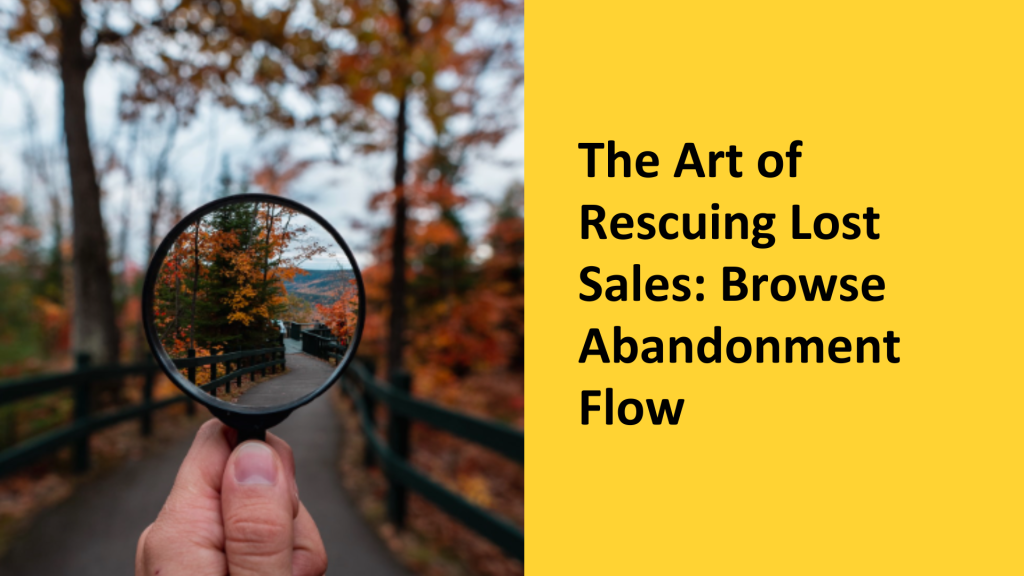In the world of e-commerce, every lost opportunity represents potential revenue slipping through your fingers. But fear not, as the browse abandonment flow is here to save the day! While abandoned cart emails have long been the go-to for recovering lost sales, browse abandonment emails are a powerful tool that can capture the attention of potential customers who have shown interest in your products. In this article, we’ll explore the ins and outs of the browse abandonment flow and how it can help you turn browsing visitors into paying customers.
Understanding Browse Abandonment Emails
Browse abandonment emails are automated messages triggered when a subscriber visits your website, browses products, but leaves without adding anything to their shopping cart. These emails present an invaluable opportunity to re-engage with potential customers and encourage them to take a second look at the products they showed interest in. By leveraging various strategies, such as highlighting product benefits, providing comparisons, showcasing testimonials, or offering exclusive incentives, browse abandonment emails can significantly increase your conversion rates.
Why Brands Need Browse Abandonment Automation?
Browse abandonment emails have a remarkable 0.96% conversion rate, which is 9.6 times higher than the average email campaign. Although cart abandonment emails boast an even higher conversion rate of 3.55%, browse abandonment flows often yield superior open rates, indicating a greater ability to capture the curiosity of potential customers. Implementing browse abandonment automation is particularly beneficial for businesses that meet the following criteria:
- High number of SKUs: If your website offers a wide range of products across various categories, browse abandonment emails can help you engage potential customers by recommending relevant alternatives and showcasing related products.
- Luxury or premium products: Selling high-ticket items often requires an extended customer journey. Browse abandonment emails enable you to demonstrate the unique benefits and value of your products, differentiating them from competitors and instilling confidence in potential buyers.
- Products that require education: If your hero product is new to the market or addresses a complex problem, browse abandonment emails can serve as an educational tool. You can provide how-to guides, highlight customer testimonials, or address any hesitations potential buyers may have.
How to Setup Browse Abandonment Flow in Klaviyo?
- Go to the Flows tab in your Klaviyo account.
- Click Create Flow.

- Search by “browse abandonment” to customize the type of flow you start with.

- Choose the flow and click create flow.
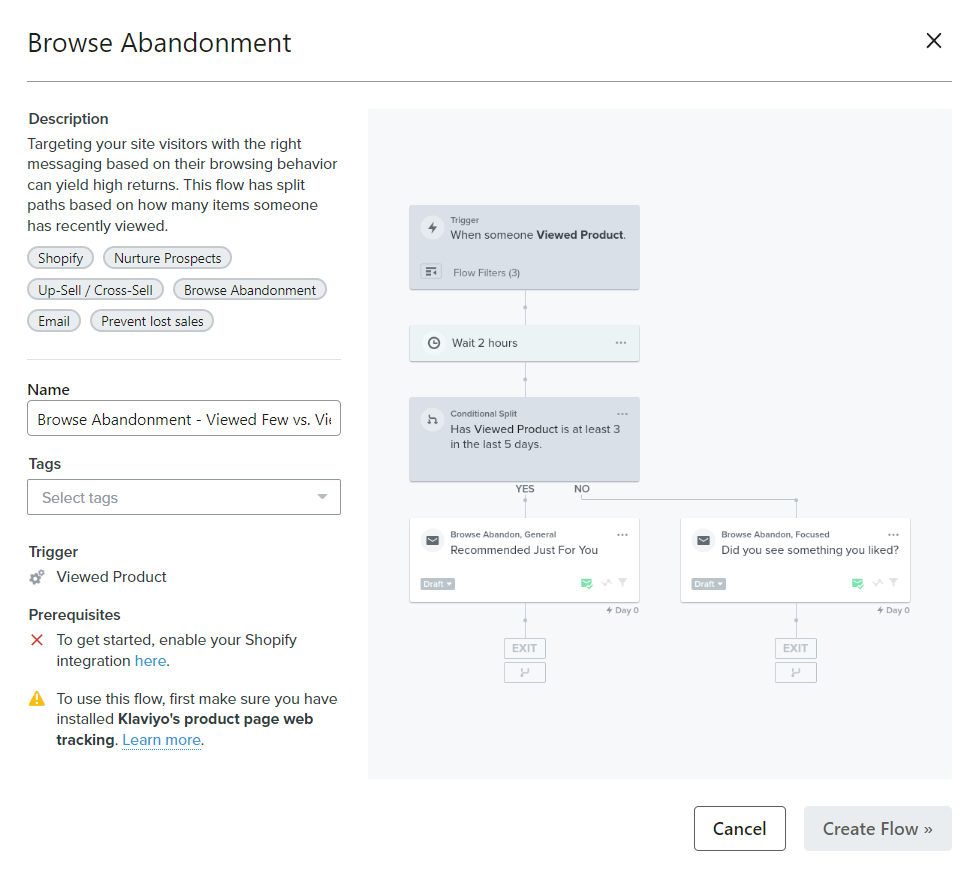
- Now further optimize the flow by customizing it on the basis of categories: Views Specific product, Customer vs Non Customer, Views Product multiple times,etc.
- It is recommended to split your flow based on the number of products viewed.
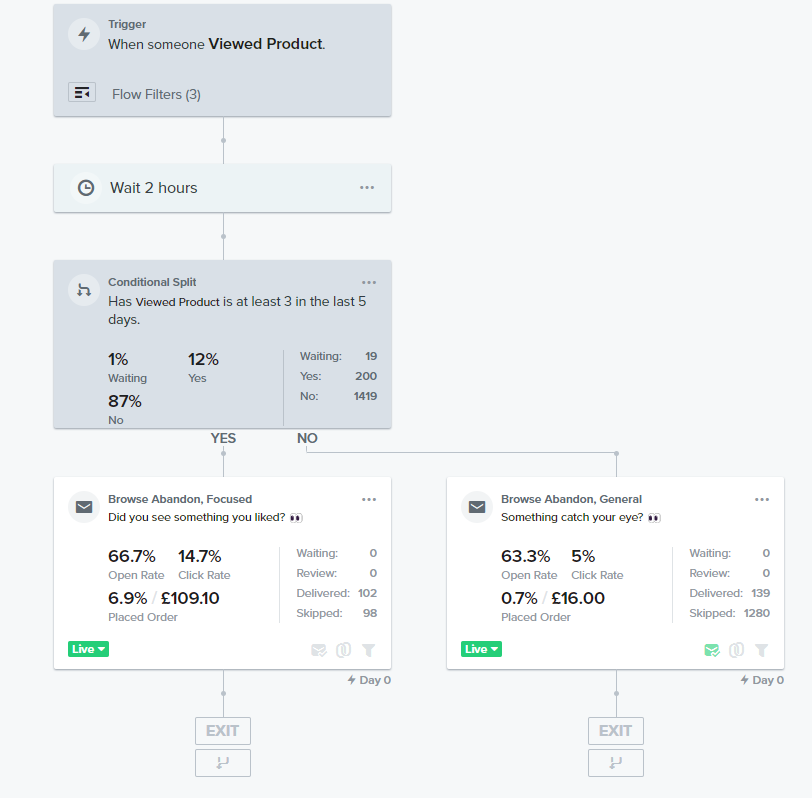
- Adding a discount to the reminder email and mentioning its expiry within 48 hours can create a sense of urgency and scarcity for the product.

- Browse Abandonment Flow can be as long as 10 emails in the span of 21 days. The aim is to help them making the choice.
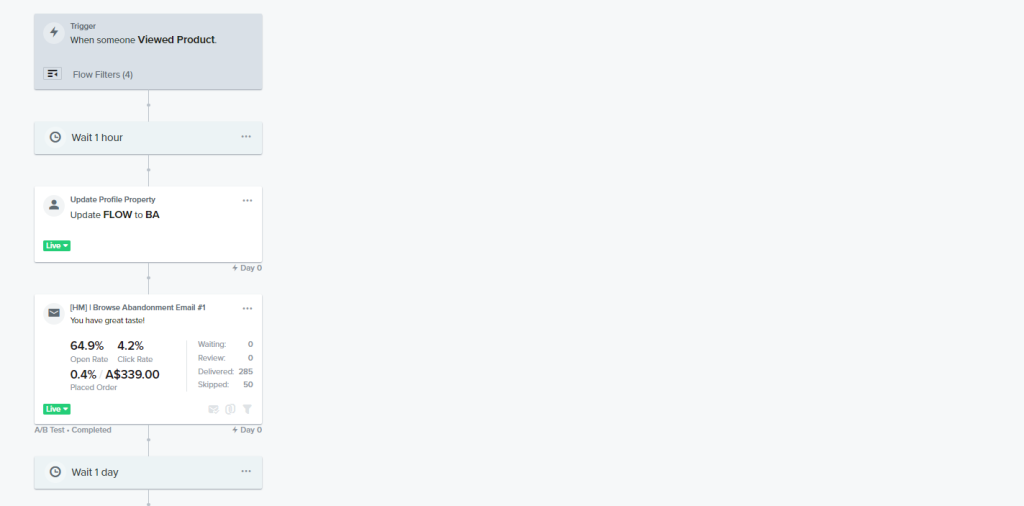
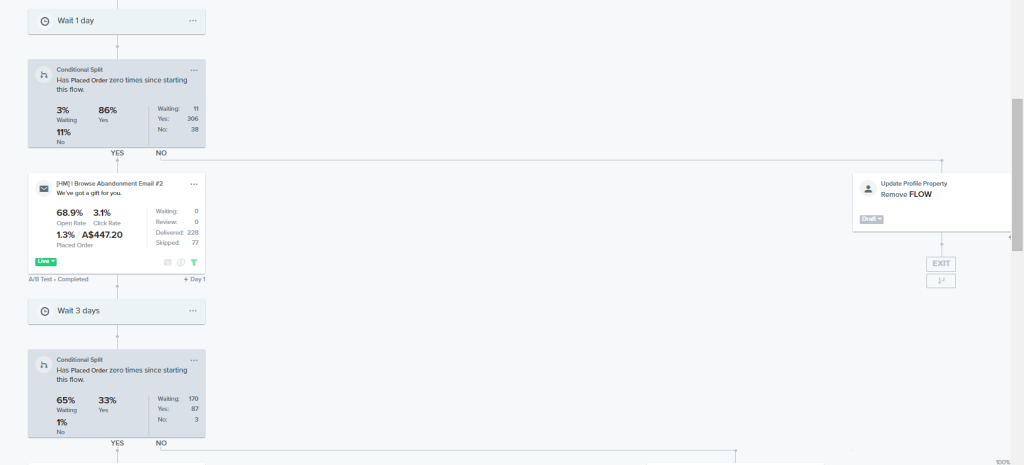
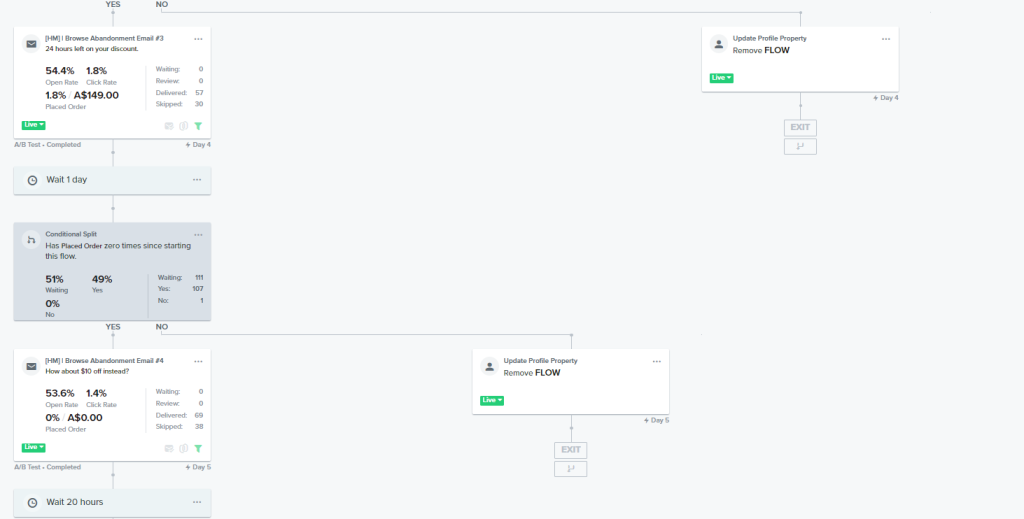

Browse Abandonment Do’s and Don’ts
Do’s:
- Include Product Reminders: Display clear product images and descriptions in your emails to jog the memory of potential customers and reignite their interest.
- Personalize with Dynamic Content: Personalization goes beyond simply inserting the customer’s name into the email. Leverage the data you have on their browsing behaviour to create truly personalized recommendations.
- Try to Avoid Bait and Switch Subject Lines: Subject lines play a crucial role in capturing the attention of your email recipients. While it’s tempting to use clickbait subject lines to increase open rates, it can backfire and lead to frustration or disappointment. Be clear, concise, and honest in your subject lines, setting accurate expectations for what recipients will find when they open the email.
Don’ts:
- Don’t Be Pushy: While it’s important to encourage customers to complete their purchase, avoid being overly pushy. Maintain a balance between gentle nudging and respecting their freedom to make a choice.
- Don’t send Generic Messaging: A one-size-fits-all approach won’t cut it in browse abandonment emails. Tailor your messaging to acknowledge the customer’s specific browsing history and demonstrate that you value their individual interests.
- Don’t Remind People They Are Being Tracked: Nobody likes being reminded that they’re being monitored. Avoid using language or phrases that emphasize tracking or surveillance. Instead, focus on providing relevant information, product recommendations, or exclusive offers that genuinely help the customer with their purchase decision.
- Don’t Add to the Noise: In a crowded inbox, it’s important to stand out in a positive way. Avoid sending too many browse abandonment emails. Instead, focus on delivering quality content that adds value to their shopping experience.
Some Example Emails
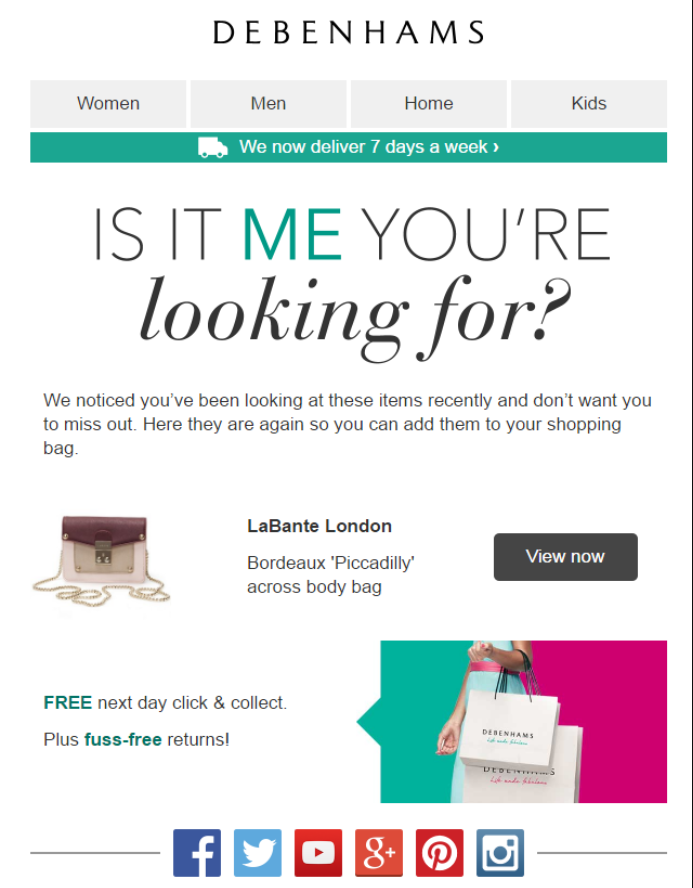

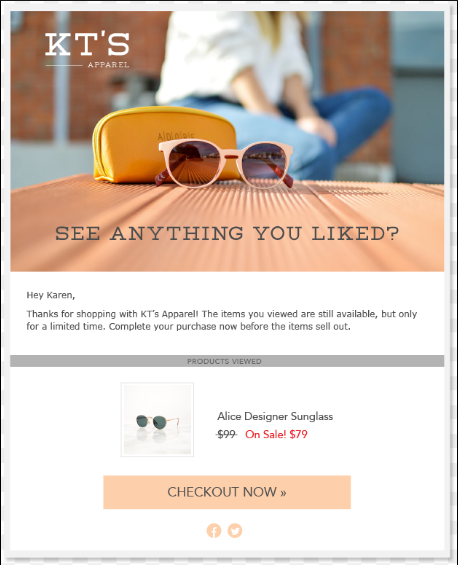
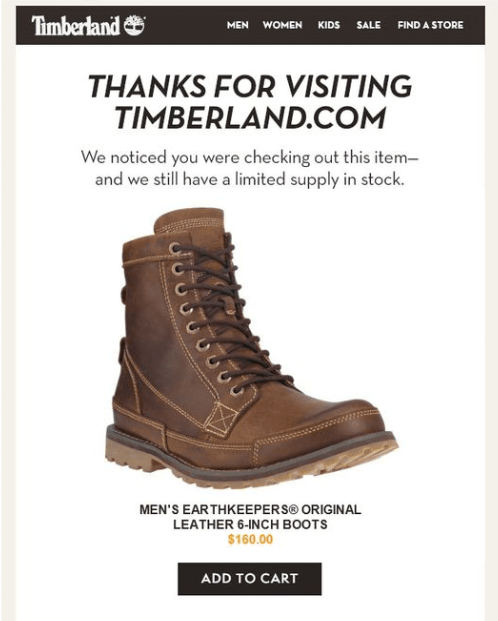
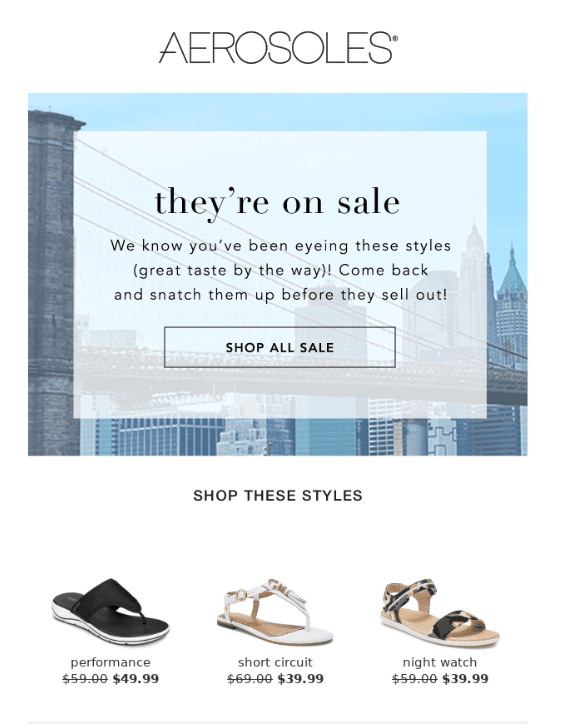
Conclusion
Remember, the goal is not only to recover lost sales but also to enhance the overall customer experience. By approaching browse abandonment emails with empathy and a genuine desire to help, you can cultivate long-lasting relationships with your customers and drive revenue growth.
So go ahead, leverage the power of the browse abandonment flow to show your customers that you understand their needs, respect their choices, and genuinely aim to assist them in finding the right products.


